We published our work looking at the effect of using spectral filtering on the detectability of marine fauna. Building on our previous research, here we investigated the potential utility of low-cost spectral filtering and discuss how to get the most out of marine fauna surveys with regards spectral filtering.

Utility of Spectral Filtering to Improve the Reliability of Marine Fauna Detections from Drone-Based Monitoring. AP Colefax, AJ Walsh, CR Purcell & P Butcher. Sensors (2023): 23 (22), 9193. https://doi.org/10.3390/s23229193.
This research used drone-based sampling to measure body morphometrics of humpback whales (Megaptera novaeangliae) and compared the body condition of east vs west coast (Australia) populations throughout the migration season. The research highlights the comparatively leaner body condition of the west coast population, compared to eastern counterparts.
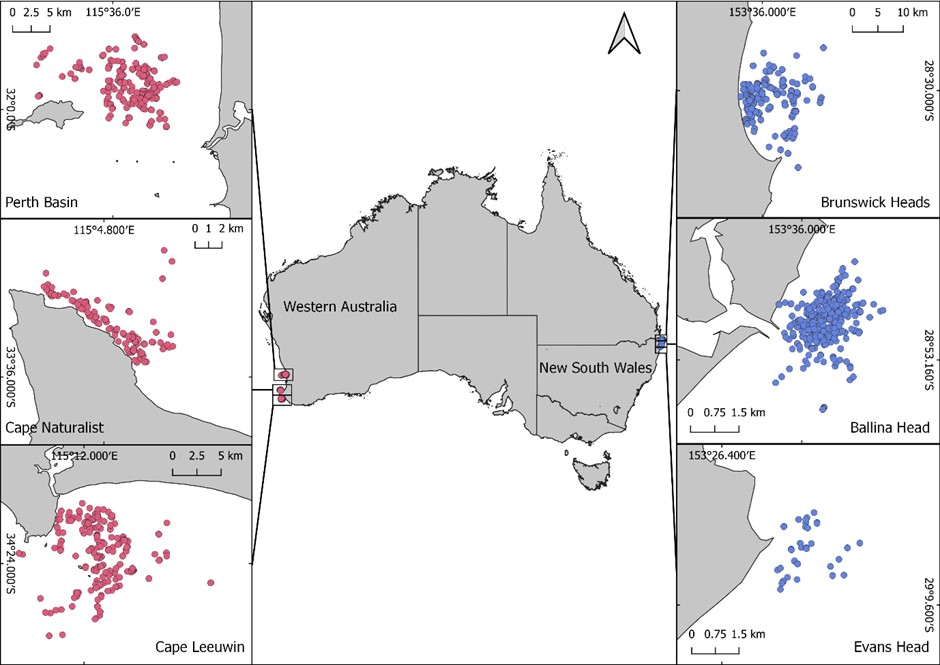
Comparisons of morphometrics and body condition between two breeding populations of Australian humpback whales., G Russell, F Christiansen, AP Colefax, KR Sprogis & D Cagnazzi. Wildlife Research (2023): 51 (1). https://doi.org/10.1071/WR23026.
This research quantified the body condition of the west coast (Australia) population of humpback whales (Megaptera novaeangliae) using drones. This was to create a baseline measure of their body condition and allow an efficient means to monitor population health as anthropogenic threats increase. We looked at body condition on the northern migration, as well as how much they had lost by their return trip (southern migration).
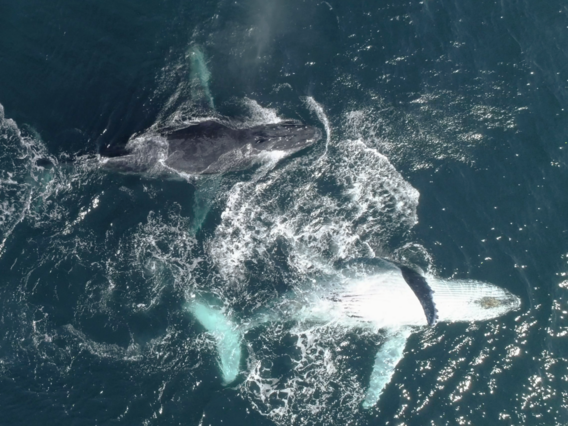
Cost of migration and migratory timing in Western Australian humpback whales. G Russell, D Cagnazzi, AP Colefax, KR Sprogis & F Christiansen. Marine mammal science (2023): 1-22. https://doi.org/10.1111/mms.13074.
This work showcases an AI model we built for NSW beaches, that can detect and classify multiple marine species. We also carefully benchmark the AI model against real-world situations to demonstrate the power and limitations of such models. Armed with this information, we are able to reliably predict how an AI model will work in the field under different scenarios, as well as identify significant improvements to be made for our future efforts in developing models and model architectures. This research was published in a refereed journal and was featured in The Conversation.
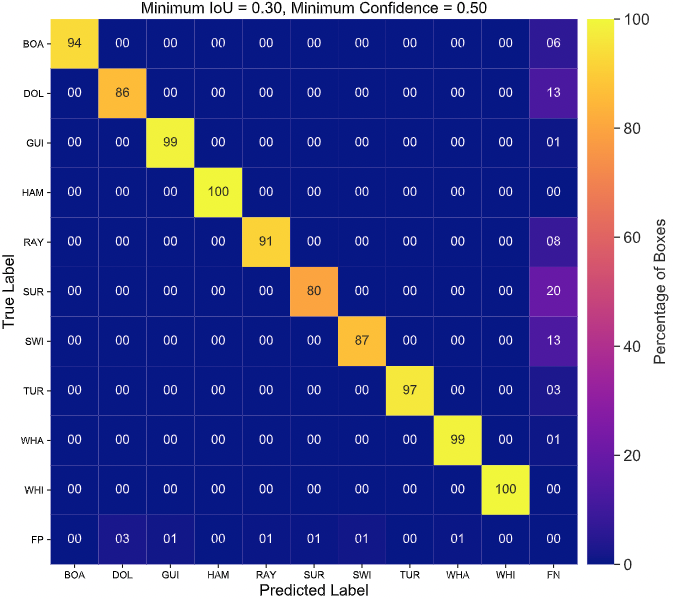
Assessing the ability of deep learning techniques to perform real-time identification of shark species in live streaming video from drones. CR Purcell, AJ Walsh, AP Colefax & P Butcher. Frontiers in Marine Science (2022): 9, 981897. https://doi.org/10.3389/fmars.2022.981897.
How shoring up drones with artificial intelligence helps surf lifesavers spot sharks at the beach. CR Purcell & P Butcher. The Conversation (2022) https://theconversation.com/how-shoring-up-drones-with-artificial-intelligence-helps-surf-lifesavers-spot-sharks-at-the-beach-192498.
Similar to the research we did on the humpback whales (Megaptera novaeangliae) of the west coast of Australia, this research quantified baseline body condition across the population of east coast humpback whales using drones. This allows important insights and an efficient monitoring means to track population health in the future. We looked at body condition on the northern migration as well as how much they lost by their return trip on the southern migration.
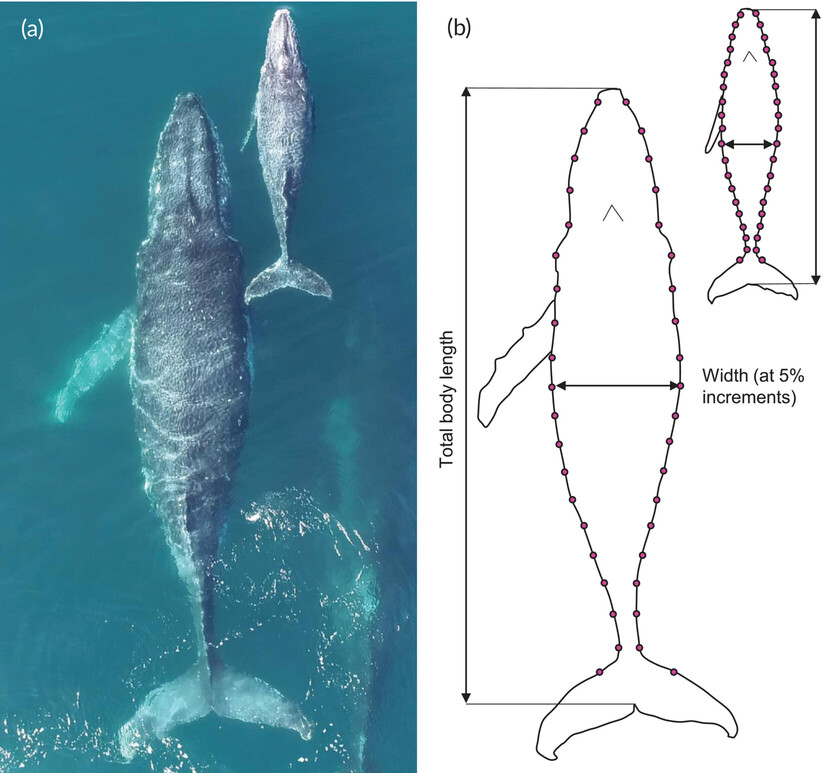
Body condition and migration timing of east Australian humpback whales. G Russell, AP Colefax, F Christiansen, G Russell, Z Fowler & D Cagnazzi. Marine Ecology Progress Series (2022): 692:169-183. https://doi.org/10.3354/meps14075.
In this research with Dr Danielle Cagnazzi and (at the time) Honours student Anna Christie, where we assessed the feasibility of obtaining reliable body morphometrics from the elusive Australian snubfin (Orcaella heinsohni) and humpback dolphins (Sousa sahulensis), using drones, in the Fitzroy River Catchment, Queensland, Australia. Morphometric data is highly useful for assessing group dynamics, nutritive state and foraging success, fitness and health, and can provide information on the life history of an animal.
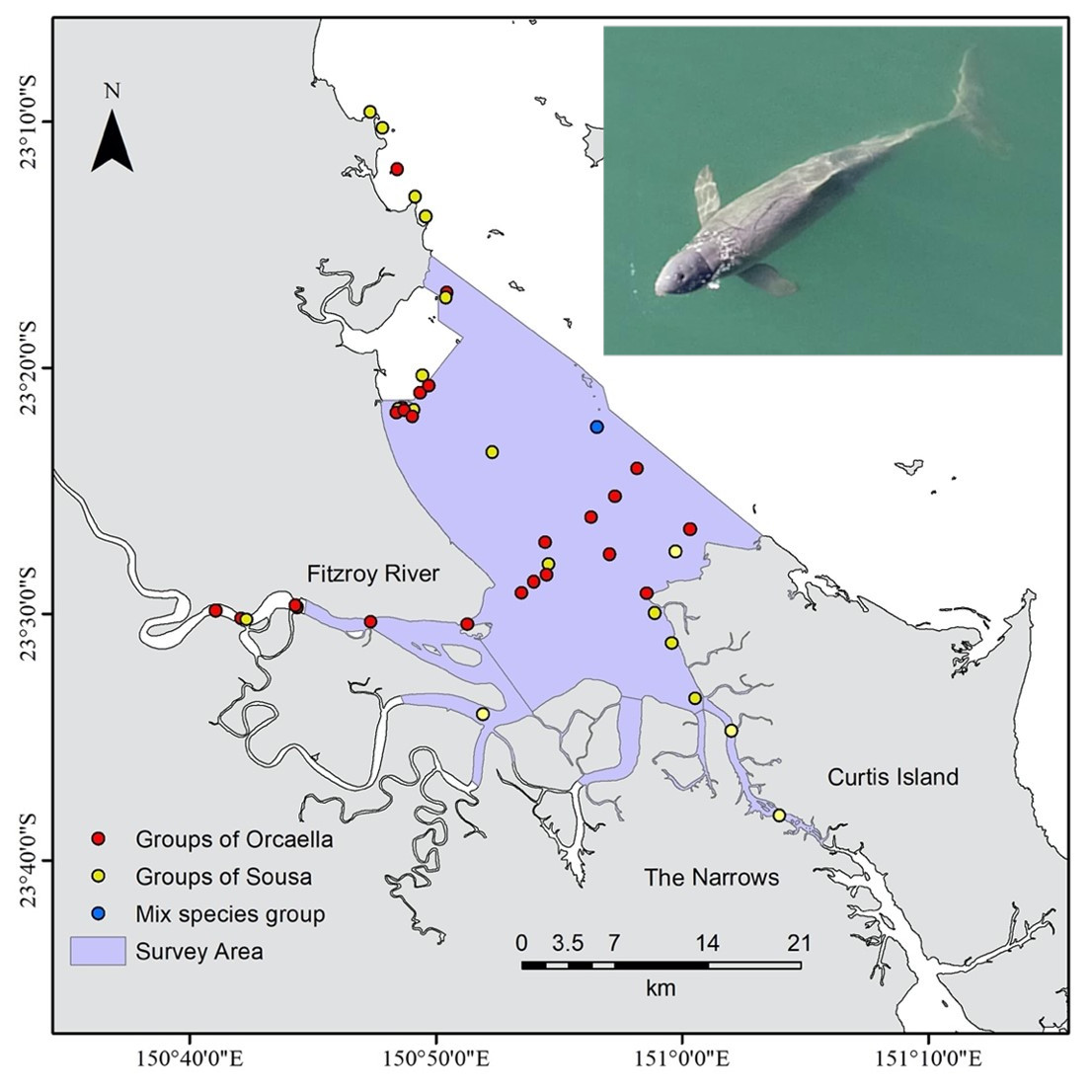
Feasibility of using small UAVs to derive morphometric measurements of Australian snubfin (Orcaella heinsohni) and humpback (Sousa sahulensis) dolphins. AI Christie, AP Colefax & D Cagnazzi. Remote Sensing (2021): 14 (1), 21. https://doi.org/10.3390/rs14010021.
This research was an extension from the drone-based shark surveillance research, where we used drone-based methods to quantify beach use. This research highlighted the various ways people were using the beach and who may be most vulnerable to potential shark bites (board riders).
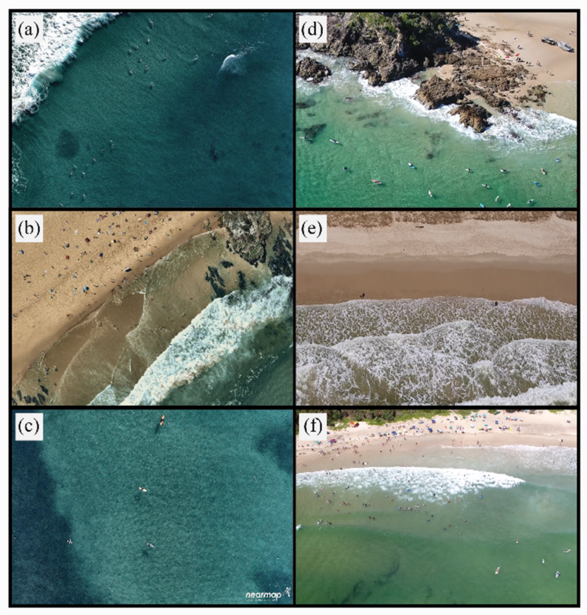
Quantifying human use of sandy shores with aerial remote sensing technology: The sky is not the limit. EJ Provost, MA Coleman, PA Butcher, AP Colefax, TA Schlacher ... Ocean & Coastal Management (2021): 211 (105750). https://doi.org/10.1016/j.ocecoaman.2021.105750.
Through extensive research of published literature, we quantified global spatio-temporal trends and drivers of coral reef calcification. Unfortunately, this research highlighted the declining health of our coral reefs. Moving forward, it is on the Sci-eye agenda to collaborate and develop efficient AI-based reef health monitoring over large spatial areas to get a better picture on which reefs are needing the most help.
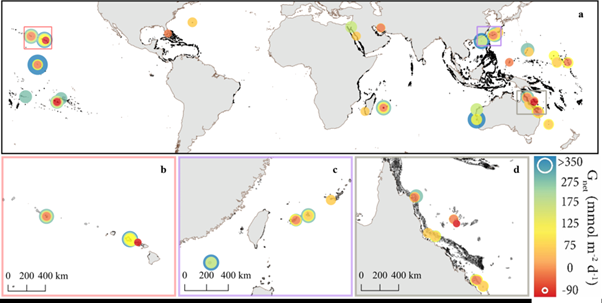
Global coral reef ecosystems exhibit declining calcification and increasing primary productivity. KL Davis, AP Colefax, JP Tucker, BP Kelaher, IR Santos. Communications Earth & Environment (2021): 2, 105. https://doi.org/10.1038/s43247-021-00168-w.
In this paper, we custom mounted a specialised ‘hyperspectral camera’ to look at the spectral characteristics of sharks, with the aim of finding the most effective method to identify sharks through spectral filtering in the future. This research was aimed at trying to find tangible ways to improve the reliability of drone-based shark surveillance.
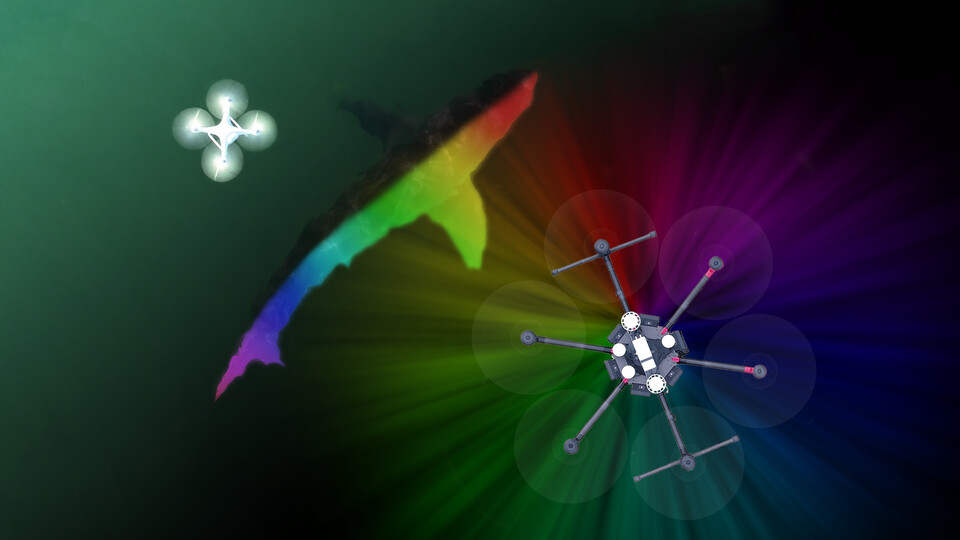
Identifying optimal wavelengths to maximise the detection rates of marine fauna from aerial surveys. AP Colefax, BP Kelaher, AJ Walsh, CR Purcell, DE Pagendam ... Biological Conservation (2021): 257, 109102. https://doi.org/10.1016/j.biocon.2021.109102.
This paper features some of the leading ecologists worldwide, and discusses how drones can be used to greatly improve our understanding of shark biology and ecology. Check out our open-access paper.
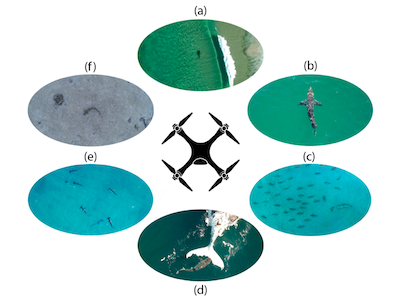
The drone revolution of shark science: A review. PA Butcher, AP Colefax, RA Gorkin, SM Kajiura, NA López, ... AJ Walsh ... Drones (2021), 5(1), 8. https://doi.org/10.3390/drones5010008.
Whale carcasses that wash up on Australian beaches present an interesting management challenge, as they conflict with beach amenity and are known to attract sharks and potentially influence their behaviour. In this paper, we used drones to track sharks near stranded whale carcasses and assess their behaviour.
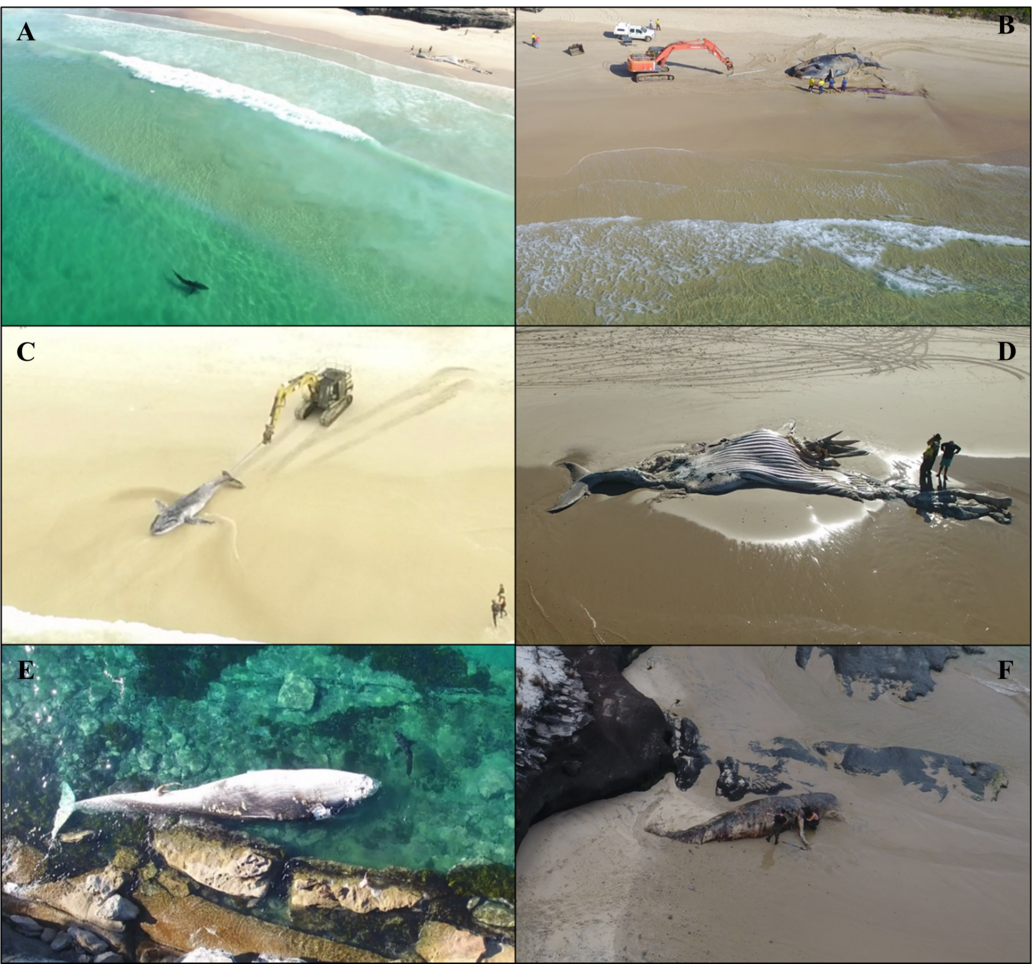
White shark behaviour altered by stranded whale carcasses: Insights from drones and implications for beach management. JP Tucker, AP Colefax, IR Santos, BP Kelaher & DE Pagendam ... Ocean & coastal management (2021): 200, 105477. https://doi.org/10.1016/j.ocecoaman.2020.105477.
Developing methods to mitigate the risk of shark bites is arguably hindered by the inability to directly assess their reliability. While different approaches have been recently developed to mitigate shark-bites along coastal beaches, it is difficult to assess their effectiveness at reducing shark bites. This paper contrasts three tech-based methods and discusses their effectiveness in relation to localised distributions of sharks.
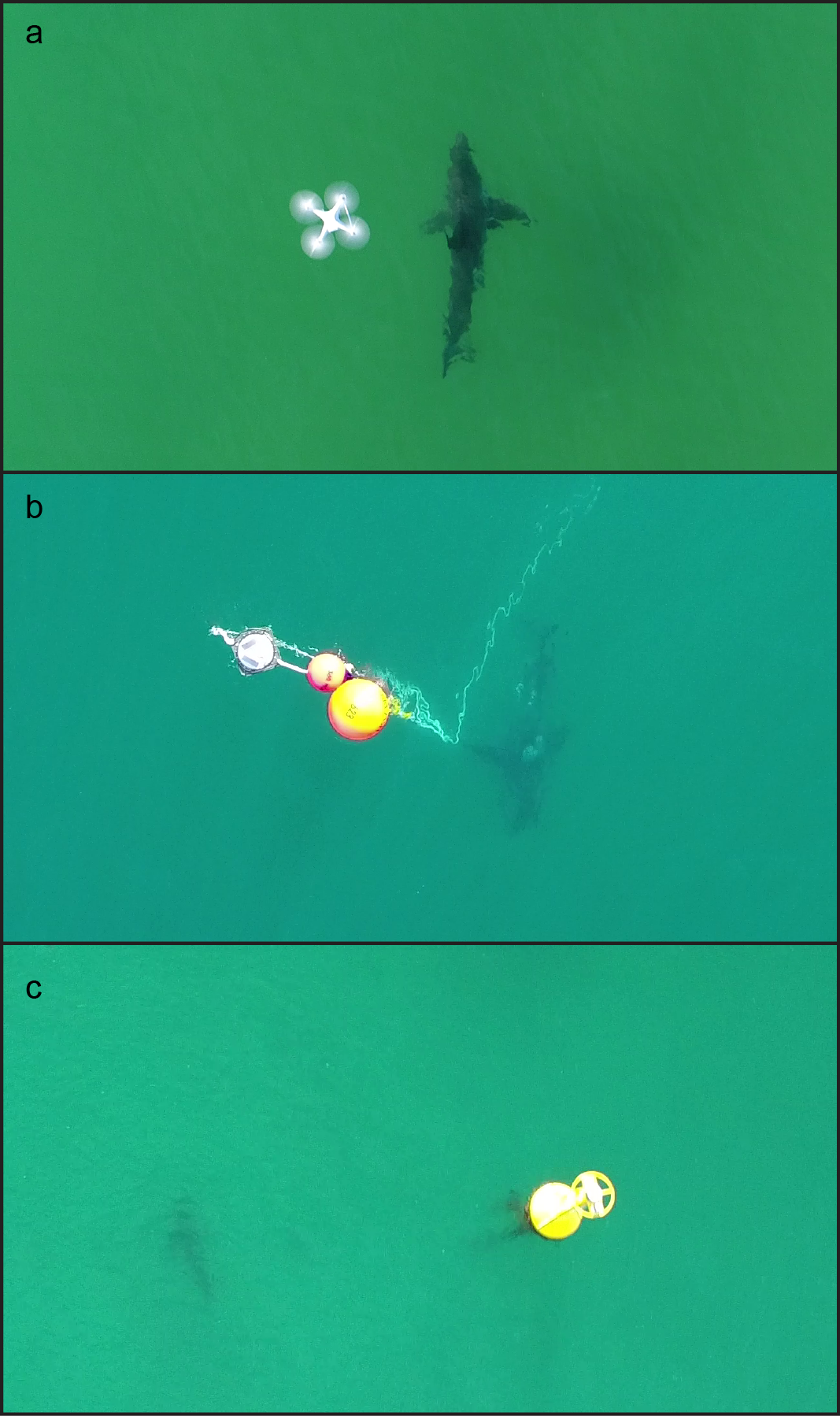
Comparing distributions of white, bull, and tiger sharks near and away from the surf break using three tech-based methods. AP Colefax, PA Butcher, DE Pagendam & BP Kelaher. Ocean & coastal management (2020): 198, 105366. https://doi.org/10.1016/j.ocecoaman.2020.105366.
Managing human-wildlife conflict successfully, such as shark bites, is complex and involves complex social aspects. Understanding the community and their perceptions is vital in trying to find management resolution that effectively deals with the human wildlife conflict. This published research, which was also featured in The Conversation, assesses public perception on the use of drones and discusses ways forward with beach management.
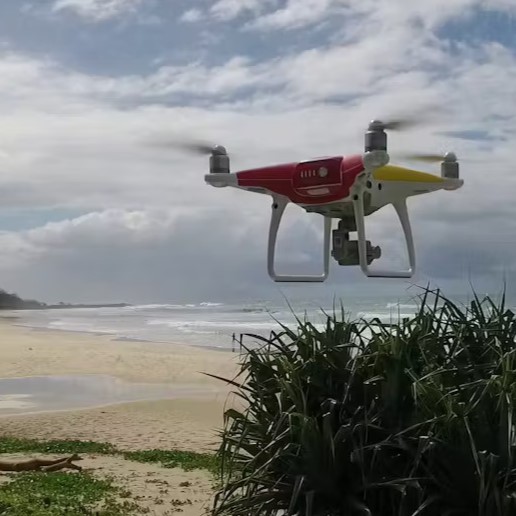
Beach-user perceptions and attitudes towards drone surveillance as a shark-bite mitigation tool. D Stokes, K Apps, PA Butcher, B Weiler, H Luke & AP Colefax. Marine policy (2020): 120, 104127. https://doi.org/10.1016/j.marpol.2020.104127.
Lifeguards with drones keep us (and sharks) safe, and beach-goers agree. D Stokes, A Colefax , Weiler B & K Apps. The Conversation (2022) https://theconversation.com/lifeguards-with-drones-keep-us-and-sharks-safe-and-beach-goers-agree-142721.
This collaborative research review by marine ecologists around the world discusses the role of drones and their potential for examining numerous aspects of marine animals, including their ecology, behaviour, health and movement patterns. The paper focuses on best practices of repeatable field science with strong consideration of potential disturbance to different species.
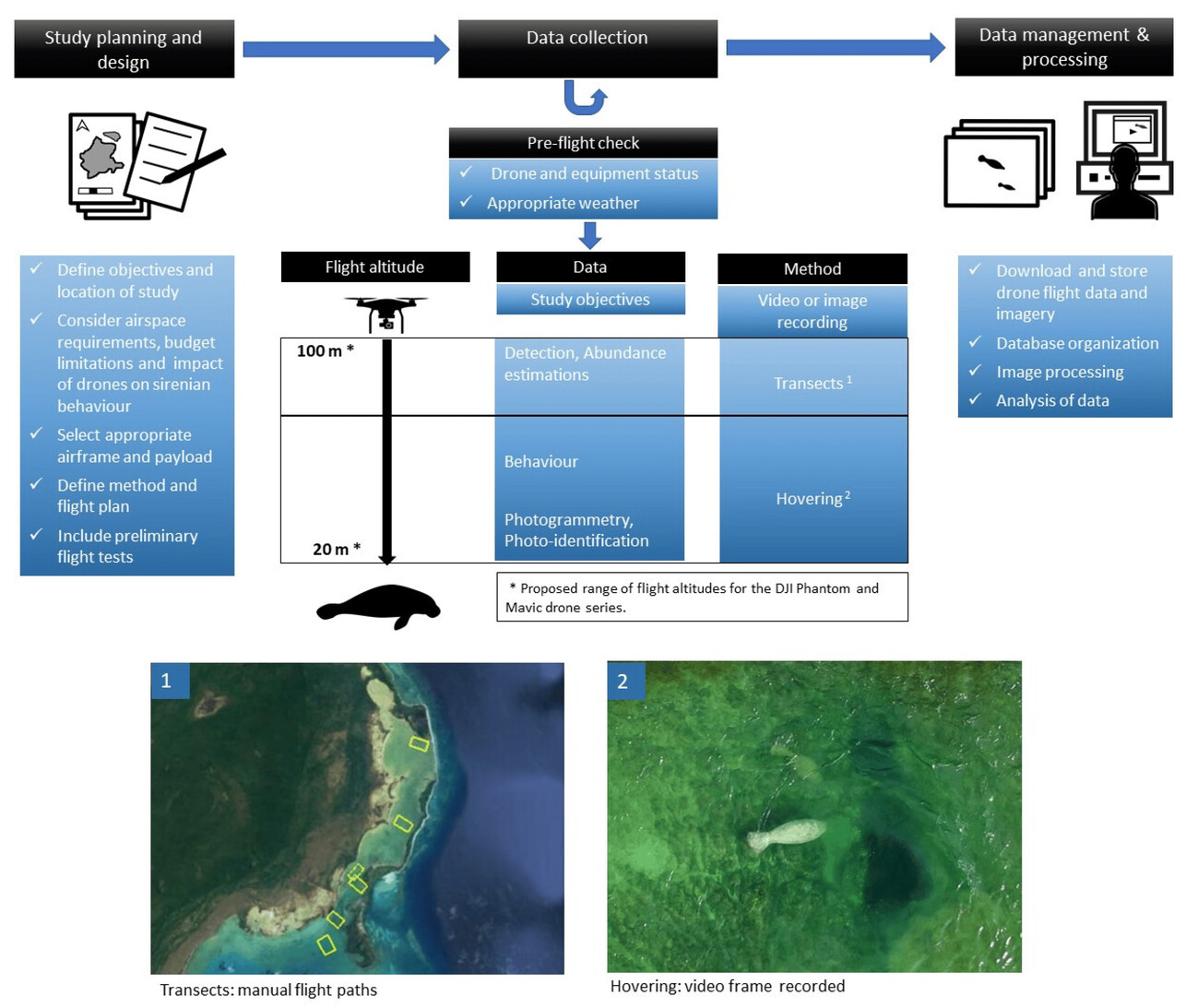
Operational protocols for the use of drones in marine animal research. V Raoult, AP Colefax, BM Allan, D Cagnazzi, N Castelblanco-Martínez ... Drones (2020): 4 (4), 64. https://doi.org/10.3390/drones4040064.
In this research, we used drones to individually track 108 white sharks along various beaches on the east coast of NSW, Australia. Previous tracking research focused on long range movements but none relate to shark bites along coastal beaches. Here we quantify size, movement patterns and behaviour and discuss the implications for drone-based shark mitigation and beach management.
Assessing white shark (Carcharodon carcharias) behaviour along coastal beaches for conservation-focused shark mitigation. AP Colefax, BP Kelaher, DE Pagendam & PA Butcher. Frontiers in Marine Science (2020): 268. https://doi.org/10.3389/fmars.2020.00268.